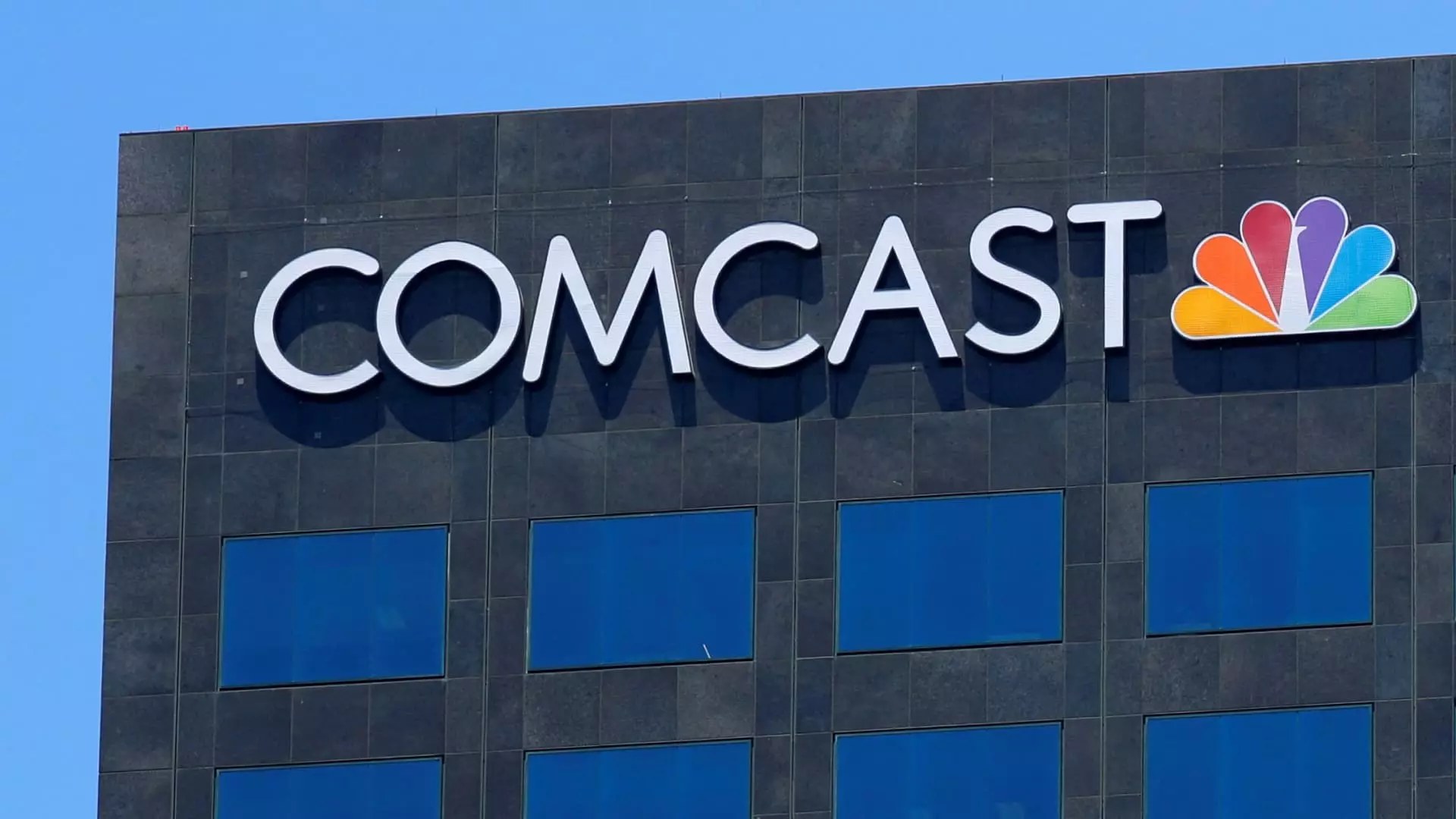In an era where traditional television is increasingly overshadowed by streaming services, Comcast has announced a significant restructuring strategy that entails the spinoff of its cable network channels. This move marks a critical pivot for the telecommunications giant, reflecting broader trends within the media landscape, particularly the ongoing decline of traditional cable subscriptions. As households continue to abandon conventional pay-TV packages in favor of on-demand streaming platforms, Comcast is repositioning itself to maximize its potential in the ever-evolving entertainment sector.
Expected to be completed within a year, the spinoff will see Mark Lazarus, the current chairman of NBCUniversal’s media group, take the reins of the new entity. The appointment of prominent figures like Lazarus signals a commitment to strategic leadership tailored to navigate an increasingly competitive media space. Anand Kini, NBCUniversal’s Chief Financial Officer, will also play a pivotal role, assuming responsibilities as the CFO and chief operating officer of the spinoff. This blend of experience and insight suggests that Comcast is not merely restructuring but is also preparing for future growth and opportunistic mergers or acquisitions within the media landscape.
Interestingly, while Comcast Chairman and CEO Brian Roberts will remain actively involved through a voting position, he will step back from operational roles—an indication of a strategic focus on governance rather than daily management. This bifurcation of leadership allows for a more agile approach to decision-making, crucial in an industry characterized by rapid change and unpredictability.
The spinoff presents a unique opportunity for the newly formed entity to explore strategic partnerships or potential sales, particularly in the context of the shifting media dynamics where value is increasingly found in synergies and collaborations. As per reports, the move will be tax-free, and the new entity’s share structure is expected to reflect that of Comcast, positioning it favorably for prospective investors. Furthermore, the separation allows Comcast to diversify and streamline its operations, potentially enhancing shareholder value in a turbulent market.
This strategy aligns with observations made by Comcast President Mike Cavanagh, who indicated previously that the company was considering creating a well-funded organization comprising a strong portfolio of cable networks. By freeing these networks from the constraints of the broader corporate structure, Comcast is positioning them to thrive independently in a market that is swiftly adapting to digital-first consumption.
Despite the prevalent trend of cord-cutting, Comcast continues to report robust revenue figures from its media segments, evidenced by a nearly 37% revenue increase attributed largely to events like the Olympic Games. This juxtaposition of declining subscription numbers against strong revenue growth from traditional networks underscores the duality within the media sector—a reliance on both legacy frameworks and emergent platforms. While losses may be reported in traditional cable subscriptions, lucrative events and programming have become cash cows that sustain substantial revenue streams.
To further secure its footing in the streaming race, Comcast has invested heavily in its streaming service, Peacock. This platform is critical not only for attracting a younger demographic moving away from cable but also as a content hub that may play a pivotal role in the spinoff’s future. The continued focus on Peacock reflects an acknowledgment that survival in the contemporary media landscape requires an agile adaptation to consumer preferences.
Although the formalities of the spinoff are still being finalized—including discussions regarding operational matters between NBC News, CNBC, and MSNBC—the unfolding scenario represents a crucial moment for Comcast. As traditional television faces existential challenges, the company’s strategic maneuvering might serve as a blueprint for other media organizations facing similar pressures.
Ultimately, the spinoff is emblematic of the ongoing transformation in media consumption, as companies like Comcast navigate the transition from legacy models to more agile, digitally-forward approaches. As the company prepares for this pivotal juncture, the key will be how effectively it can exploit its resources and capabilities to capture new opportunities in the marketplace, ensuring not just survival, but the potential for innovation and growth in a rapidly changing media ecosystem.

